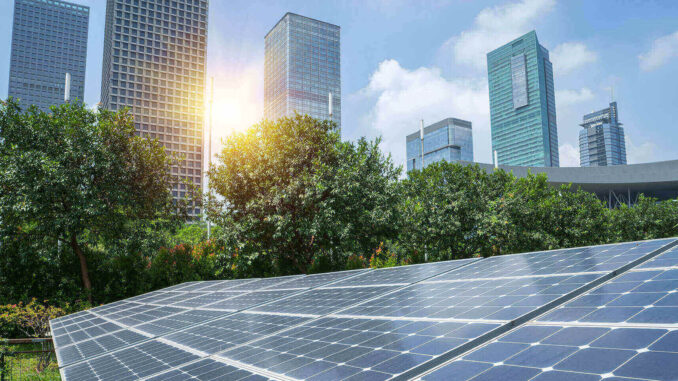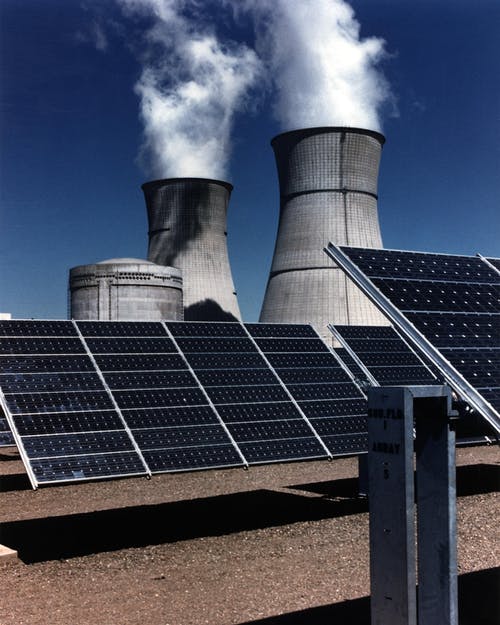
Over the years, efficient energy usage has become an increasingly important issue throughout the world due to global warming. There is currently a push for everyone to turn toward energy efficient products and design.
Research says, globally the building sector accounts for more electricity usage than any other sector, 42 per cent. No wonder considering that we spend more than 90 per cent of our time in buildings. In many developing countries there is normally very little margin between existing power supply and electricity demand.

What is Energy Efficient Building?
Energy efficient buildings are designed to provide a significant reduction of energy. Energy efficient building design involves constructing or upgrading buildings that are able to get the most work out of the energy that is supplied to them by taking steps to reduce energy loss such as decreasing the loss of heat through the building envelope Inefficiencies that are not removed in the building process can pose issues for years. However, keeping energy efficient building design in mind when construction is underway is a more effective way to approach making a home more efficient, which is less expensive for a homeowner in the long run. Building codes exist around the world to ensure that buildings are energy efficient to a certain degree.
An energy-efficient building creates comfortable living conditions inside the dwelling with the least possible amount of energy consumption maximizing efficiency in use of resources. Measures to make a building energy-efficient encompass the building’s entire lifecycle; an energy-efficient building keeps the building fully functional and thermally comfortable for its occupants as well. With the cost of energy increasing and the energy crisis being an imminent reality, the need to provide energy-efficient building designs becomes more important. As per energy statistics data obtained for 2017 for India from the Ministry of Statistics and Program Implementation, buildings account for the second-highest consumption of energy after industries. An energy-efficient building balances all aspects of energy use in a building by providing an optimized mix of passive solar–design strategies, energy-efficient equipment, and renewable sources of energy.

Technological improvements in buildings design and appliances offer new opportunities for energy savings some of the outcomes are as under:
- Long-term energy and cost savings: an energy efficient building will have the advantage of lower energy, water, and maintenance costs.
- Lower emissions and overall environmental impact: energy efficient buildings have lower greenhouse gas emissions due to their reduced reliance on fossil fuels. Buildings that use primarily clean energy such as hydroelectricity have the lowest emissions.
- Better thermal comfort: well-designed mechanical systems and building components work together to manage comfortable indoor temperatures.
- Improved comfort and health: continuous ventilation and fresh air throughout the building can lead to better well-being with occupants and as a result, a more productive workforce.
- Higher Value: businesses and consumers see the value in energy efficient buildings, and as a result there is a premium associated with buying or leasing space in well-built, energy efficient buildings.
Conclusion:
The need to design energy efficient buildings is need of time and very paramount, with the current rate of urbanization and the subsequent increase in energy demand, energy efficiency in buildings has a significant role to play in contributing to energy security in developing countries.
Having an energy efficient building is becoming more and more vital as energy emerges as a critical economic issue due to high demand for energy and unsustainable supplies of energy. Energy efficient buildings offer opportunities to save money as well as reduce greenhouse gas emissions. As well, the reliance on non-renewable fuels is not sustainable, and it involves using more and more destructive processing means to obtain these fuels. In addition to overall environmental benefits that arise from a more energy efficient building, there are also personal benefits. The best time to focus on energy efficiency is when a building is first being built, as this new construction offers opportunities to integrate new energy efficiency measures more simply than in a building that is already complete. It’s imperative for the developers to opt for energy star ratings or opting for appropriate certification for the building. That will promote greater energy efficiency in buildings & include a broad array of measures that may provide environmental benefits beyond increased energy efficiency.
The concern today is lack of information on energy consumption trends in buildings and the opportunities and potential for energy savings is a significant barrier. With increasing electricity demand, renewable sources for electricity generation should be encouraged.
Bureau of Energy Efficiency (BEE) has taken up various policy and regulatory initiatives to enhance energy efficiency of building sector namely ECBC, support for energy assessment & retrofitting process and voluntary star rating program for commercial buildings.
By Abhijit Sarkar



Be the first to comment